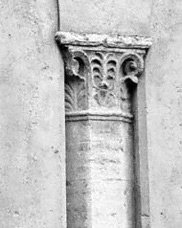| Ancient Art and Architecture |
 |

|
 |
|
 |
 |
Greek and Roman art from many museum galleries and displays, including the J. Paul Getty Museum. |
 |

|
 |
|
 |
 |
Ancient Greek and Roman coins. |
 |

|
 |
|
 |
 |
Ancient inscriptions, predominantly Greek and Roman; includes Athenian inscriptions. |
 |

|
 |
|
 |
 |
Organic material, such as plaster casts of bodies from Pompeii, and reconstructions of war paraphernalia and ancient technology. |
 |

|
 |
|
 |
 |
Ancient sites and monuments from archaic Greece through the late Roman Empire. |
 |

|
 |
|
 |
 |
Architectural sculpture, primarily from the Greek and Roman periods. |
 |

|
 |
|
 |
 |
Ancient mosaics, both in situ and removed, from Greece, Italy, Libya, Tunisia, Turkey, and other countries. |
 |

|
 |
|
 |
 |
Ancient sculpture in the round, primarily from the Greek and Roman periods. |
 |

|
 |
|
 |
 |
Ancient sculpture in relief, primarily from the Greek and Roman periods. |
 |

|
 |
|
 |
 |
Ancient portrait sculpture of well-known individuals from the Greek and Roman periods. |
 |

|
 |
|
 |
 |
Ancient sarcophagi with relief sculptural decoration, primarily from the Greek and Roman periods. |
 |

|
 |
|
 |
 |
Primarily Italian drawings from the 16th through the 18th centuries. |
 |

|
 |
|
 |
 |
Painted bathtubs, panels, and tables from Cycladic, Minoan, Egypto-Roman, and Coptic cultures. |
 |

|
 |
|
 |
 |
Includes Egypto-Roman mummy portraits, cinerary urns, sarcophagi, and stelae. |
 |

|
 |
|
 |
 |
Ancient wall paintings, both in situ and detached, with an emphasis on the Greek, Etruscan, and Roman periods. |
 |

|
 |
|
 |
 |
Objects include arms and armor, athletic equipment, furniture, jewelery, lamps, musical instruments, textiles, and vessels. |
 |

|
 |
|
 |
 |
Includes Attic black- and red-figure vases arranged according to the system established by Sir John Davidson Beazley. |
 |

|
 |
|
 |
 |
Amyx's archive used for his publication, Corinthian Vase Painting of the Archaic Period. |
 |

|
 |
|
 |
 |
Primarily Etruscan red-figure vases from the three major groups: Caeretan, Tarquinian, and Faliscan. |
 |

|
 |
|
 |
 |
Felbermeyer's personal archive includes Greek, Roman, and Etruscan antiquities, and documentation of his work for the Central Collecting Point in Munich after World War II. |
 |

|
 |
|
 |
 |
Ancient Greek and Roman architecture and sculpture as well as some Byzantine architecture. |
 |

|
 |
|
 |
 |
From 1865–77, Parker, an English publisher, bookseller, and antiquarian, documented the remains of ancient Rome. (Note that the Photo Archive houses facsimiles; the original photographs reside in Special Collections.) |
 |

|
 |
|
 |
 |
Paul Arndt, a classical archaeologist and photographer, documented Greek and Roman sculpture from collections across Europe as well as several in the United States. |
 |


